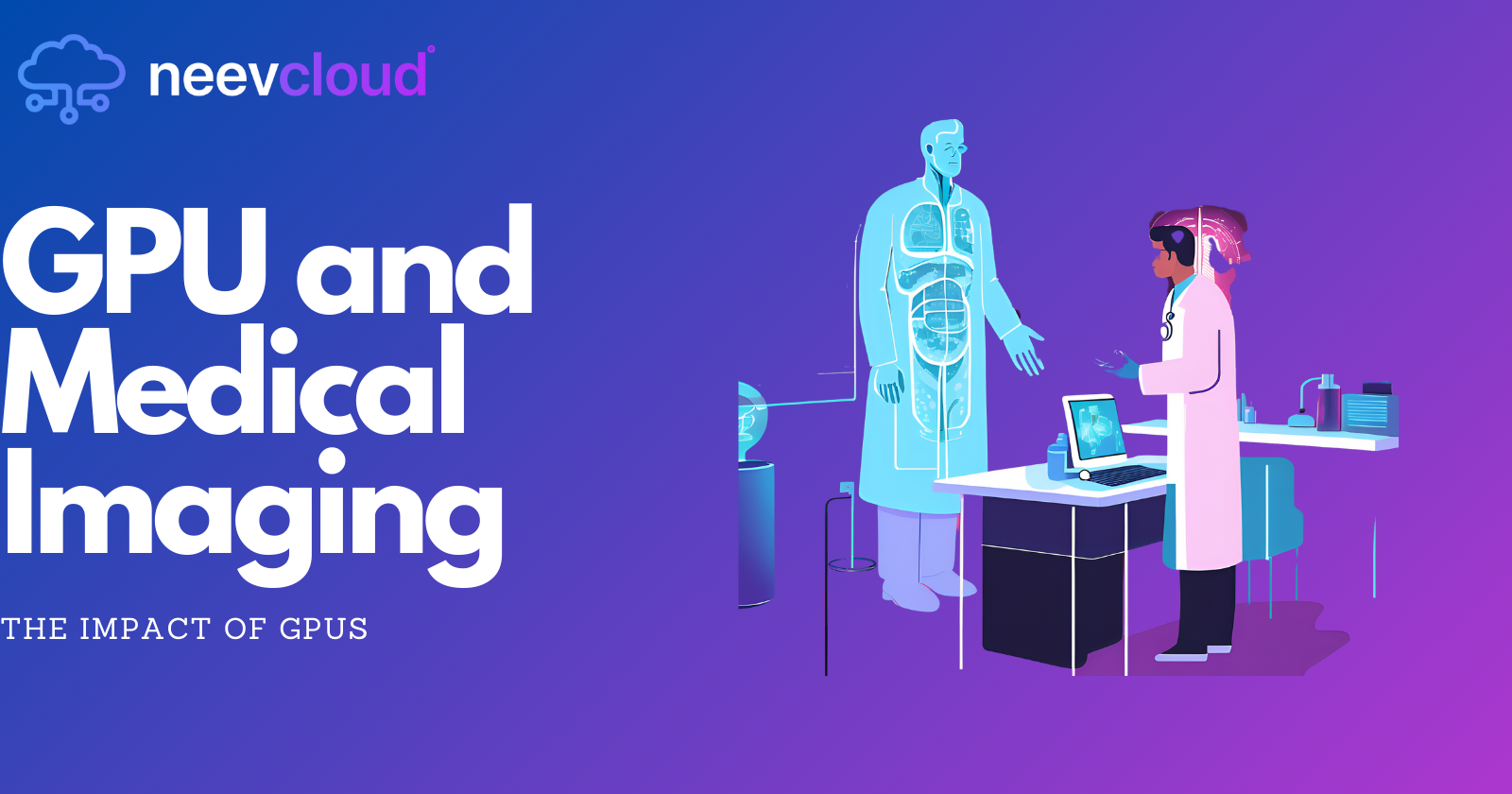The Impact of GPUs on Modern Medical Imaging
 Tanishka Singh
Tanishka Singh
The world of medical imaging has been through tremendous changes over the past few decades, all of which are because of technological advancements. The introduction of GPUs (Graphical Processing Units) has changed the way medical images are processed, analyzed, or interpreted. This blog will take you through the journey of medical imaging, from the time when GPUs were not a part of this world to now, when they are one of the most crucial parts of this sector. This is a sneak peek into the transformational role of GPUs and the areas where they have really made a difference.
The Evolution of Medical Imaging
Before GPUs: A Time of Limitations
In the earlier days, techniques such as X-rays, CT scans, and MRIs relied heavily on traditional computing methods. The main problem? These methods were often slow and poorly organized, which resulted in long waiting times for patients and healthcare providers. For example:
Image Processing Speed: Traditional CPU-based systems struggled with the vast amounts of data generated by high-resolution imaging techniques. Processing a single MRI scan could take hours or even days.
Accuracy and Detail: The limitations in computational power meant that many advanced algorithms for image segmentation and reconstruction could not be effectively implemented, leading to less accurate diagnoses.
The GPU Revolution
Ever since GPUs were introduced in medical imaging, the field has seen a major transformation in functioning. GPUs were originally designed for rendering graphics in video games and can handle parallel processing tasks easily. This capability makes them perfect for processing multiple data points simultaneously, therefore enhancing the speed and efficiency of medical imaging tasks.
Key Benefits of GPUs in Medical Imaging:
Speed: GPUs can perform complex calculations up to 70 times faster than traditional CPUs. For example, using NVIDIA’s A100 GPU can accelerate image processing tasks that previously took hours down to mere minutes.
Enhanced Algorithms: With the power of GPUs, sophisticated algorithms for image registration, segmentation, and denoising became feasible. This advancement has led to improved diagnostic accuracy and treatment planning.
Cost Efficiency: The price-to-performance ratio of GPUs is favorable compared to CPUs. Hospitals can process large volumes of data at a fraction of the cost associated with traditional computing methods.
Applications of GPUs in Medical Imaging
The applications of GPU technology in medical imaging are extensive and continue to evolve:
Image Segmentation: GPUs facilitate rapid segmentation of complex images. For example, a study showed that GPU-accelerated segmentation algorithms can reduce processing time from hours to minutes while achieving over 90% accuracy in identifying tumors.
Image Registration: Accurate alignment of images from different modalities is crucial for tracking disease progression. GPU implementations have been shown to improve registration speed by up to 50%, allowing real-time adjustments during surgical procedures.
Image Reconstruction: GPU acceleration significantly speeds up reconstruction processes for modalities like MRI and CT scans. For instance, using CUDA-based algorithms has reduced reconstruction times from 30 minutes to under 5 minutes for high-resolution images.
Real-time Analysis: AI integration powered by GPUs enables real-time analysis of medical images. For example, deep learning models trained on GPU clusters can analyze X-ray images with over 95% accuracy within seconds, facilitating immediate diagnostics.
Genomic Medicine: In genomic medicine, whole genome sequencing generates terabytes of data requiring analysis. Using GPU clusters allows researchers to identify mutations and biomarkers efficiently; studies indicate that this can reduce analysis time from weeks to days.
Portable Imaging Devices: Embedded GPU solutions are being utilized in portable medical imaging devices like handheld ultrasound machines. These devices can now provide high-quality imaging on-site, improving patient care in emergency situations.
Real-Life Case Study: Melanoma Diagnosis at Stanford University
A compelling example of GPU impact in medical imaging comes from Stanford University, where researchers developed a deep learning model to diagnose melanoma from skin lesion images using an NVIDIA Quadro P4000 GPU.
Key Findings:
Model Training: The team trained the Inception v4 model on over 100,000 images of malignant melanomas and benign moles to identify distinguishing features.
Diagnostic Accuracy: The AI model achieved 95% sensitivity and 64% specificity in detecting tumors compared to an average dermatologist's scores of 86.6% sensitivity and 71.3% specificity.
Potential for Early Detection: By achieving expert-level accuracy, this AI system could be instrumental in screening for melanoma at its most treatable stages, potentially reducing mortality rates from skin cancer.
Conclusion
The transformative role of GPUs in medical imaging cannot be undermined. From drastically improving the processing speeds to allowing advanced diagnostic capabilities through the integration of AI, GPUs have truly reshaped the future of healthcare. As we continue to acknowledge these advancements, the potential for increased patient outcomes grows exponentially. To conclude, as healthcare providers look toward the future, investing in GPU technology seems crucial for staying competitive and providing timely care. The journey from traditional imaging methods to GPU-powered solutions exemplifies how innovation can lead to significant improvement in managing the patients’ health.
Subscribe to my newsletter
Read articles from Tanishka Singh directly inside your inbox. Subscribe to the newsletter, and don't miss out.
Written by
